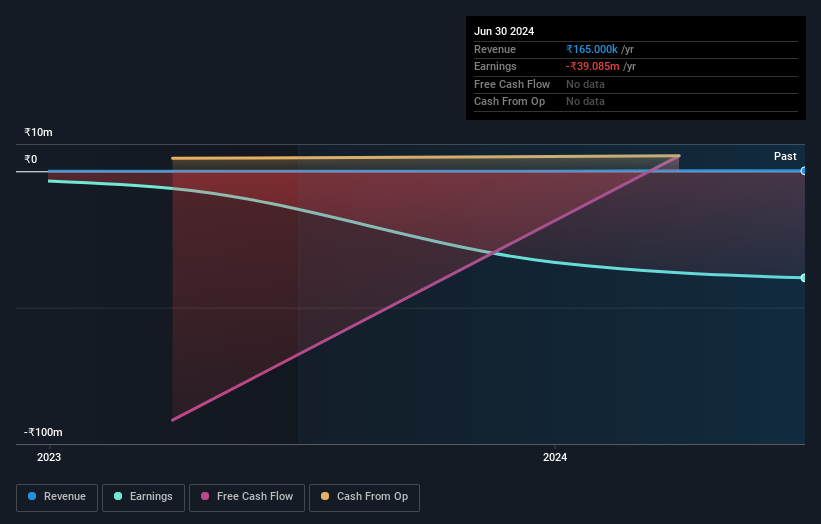- India
- /
- Real Estate
- /
- NSEI:BLAL
BEML Land Assets Limited's (NSE:BLAL) market cap dropped ₹2.3b last week; State or government bore the brunt

Key Insights
- BEML Land Assets' significant state or government ownership suggests that the key decisions are influenced by shareholders from the larger public
- 54% of the company is held by a single shareholder (India)
- Institutional ownership in BEML Land Assets is 14%
To get a sense of who is truly in control of BEML Land Assets Limited (NSE:BLAL), it is important to understand the ownership structure of the business. The group holding the most number of shares in the company, around 54% to be precise, is state or government. Put another way, the group faces the maximum upside potential (or downside risk).
As market cap fell to ₹12b last week, state or government would have faced the highest losses than any other shareholder groups of the company.
Let's delve deeper into each type of owner of BEML Land Assets, beginning with the chart below.
Check out our latest analysis for BEML Land Assets

What Does The Institutional Ownership Tell Us About BEML Land Assets?
Institutions typically measure themselves against a benchmark when reporting to their own investors, so they often become more enthusiastic about a stock once it's included in a major index. We would expect most companies to have some institutions on the register, especially if they are growing.
We can see that BEML Land Assets does have institutional investors; and they hold a good portion of the company's stock. This suggests some credibility amongst professional investors. But we can't rely on that fact alone since institutions make bad investments sometimes, just like everyone does. If multiple institutions change their view on a stock at the same time, you could see the share price drop fast. It's therefore worth looking at BEML Land Assets' earnings history below. Of course, the future is what really matters.

We note that hedge funds don't have a meaningful investment in BEML Land Assets. Our data shows that India is the largest shareholder with 54% of shares outstanding. With such a huge stake in the ownership, we infer that they have significant control of the future of the company. In comparison, the second and third largest shareholders hold about 7.0% and 2.3% of the stock.
While it makes sense to study institutional ownership data for a company, it also makes sense to study analyst sentiments to know which way the wind is blowing. Our information suggests that there isn't any analyst coverage of the stock, so it is probably little known.
Insider Ownership Of BEML Land Assets
The definition of an insider can differ slightly between different countries, but members of the board of directors always count. Management ultimately answers to the board. However, it is not uncommon for managers to be executive board members, especially if they are a founder or the CEO.
Most consider insider ownership a positive because it can indicate the board is well aligned with other shareholders. However, on some occasions too much power is concentrated within this group.
Our data cannot confirm that board members are holding shares personally. Given we are not picking up on insider ownership, we may have missing data. Therefore, it would be interesting to assess the CEO compensation and tenure, here.
General Public Ownership
The general public-- including retail investors -- own 32% stake in the company, and hence can't easily be ignored. While this size of ownership may not be enough to sway a policy decision in their favour, they can still make a collective impact on company policies.
Next Steps:
I find it very interesting to look at who exactly owns a company. But to truly gain insight, we need to consider other information, too. For instance, we've identified 1 warning sign for BEML Land Assets that you should be aware of.
Of course this may not be the best stock to buy. So take a peek at this free free list of interesting companies.
NB: Figures in this article are calculated using data from the last twelve months, which refer to the 12-month period ending on the last date of the month the financial statement is dated. This may not be consistent with full year annual report figures.
Valuation is complex, but we're here to simplify it.
Discover if BEML Land Assets might be undervalued or overvalued with our detailed analysis, featuring fair value estimates, potential risks, dividends, insider trades, and its financial condition.
Access Free AnalysisHave feedback on this article? Concerned about the content? Get in touch with us directly. Alternatively, email editorial-team (at) simplywallst.com.
This article by Simply Wall St is general in nature. We provide commentary based on historical data and analyst forecasts only using an unbiased methodology and our articles are not intended to be financial advice. It does not constitute a recommendation to buy or sell any stock, and does not take account of your objectives, or your financial situation. We aim to bring you long-term focused analysis driven by fundamental data. Note that our analysis may not factor in the latest price-sensitive company announcements or qualitative material. Simply Wall St has no position in any stocks mentioned.
Have feedback on this article? Concerned about the content? Get in touch with us directly. Alternatively, email editorial-team@simplywallst.com
About NSEI:BLAL
Mediocre balance sheet very low.
Market Insights
Community Narratives



